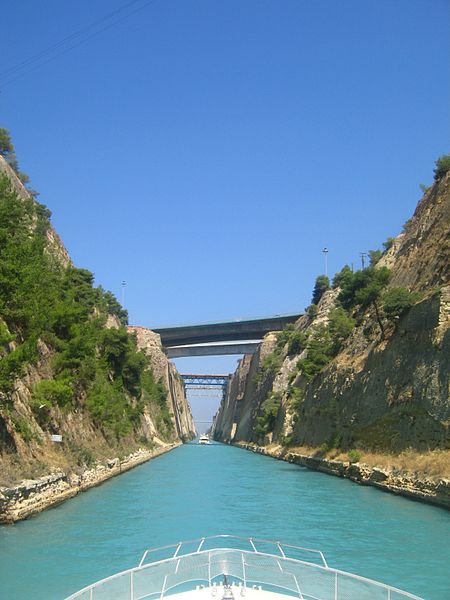Megara is a historic town and a municipality in West Attica, Greece. It lies in the northern section of the Isthmus of Corinth opposite the island of Salamis, which belonged to Megara in archaic times, before being taken by Athens. Megara was one of the four districts of Attica, embodied in the four mythic sons of King Pandion II, of whom Nisos was the ruler of Megara. Megara was also a trade port, its people using their ships and wealth as a way to gain leverage on armies of neighboring poleis. Megara specialized in the exportation of wool and other animal products including livestock such as horses. It possessed two harbors, Pagae to the west on the Corinthian Gulf, and Nisaea to the east on the Saronic Gulf of the Aegean Sea.
Megara
View of the archaeological site
Megara by Vincenzo Coronelli, 1687
Nike of Megara, large statue of Nike found at Megara in 1821.
The Isthmus of Corinth is the narrow land bridge which connects the Peloponnese peninsula with the rest of the mainland of Greece, near the city of Corinth. The Isthmus was known in the ancient world as the landmark separating the Peloponnese from mainland Greece. In the first century AD the geographer Strabo noted a stele on the Isthmus of Corinth, which bore two inscriptions. One towards the East, i.e. towards Megara, reading: "Here is not Peloponnesus, but Ionia" and the one towards the West, i.e. towards the Peloponnese: "Here is Peloponnesus, not Ionia" ; Plutarch ascribed the erection of the stele to the Attic hero Theseus, on his way to Athens.
Aerial photograph of the isthmus of Corinth
Sailing through the isthmus of Corinth, using the Corinth Canal
The submersible bridge at the Aegean side of canal
The Peloponnese seen from space, with the Isthmus of Corinth at upper right








